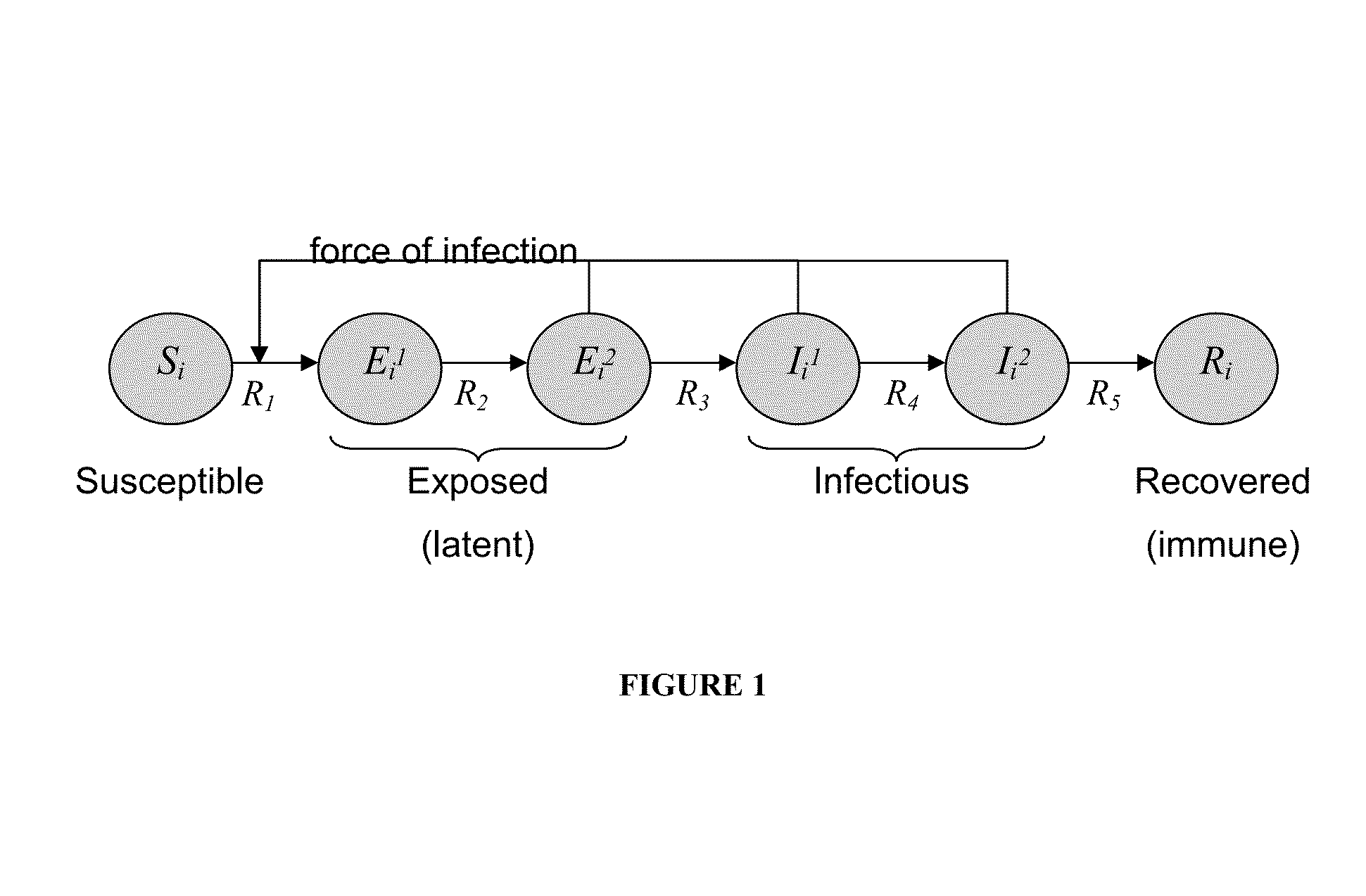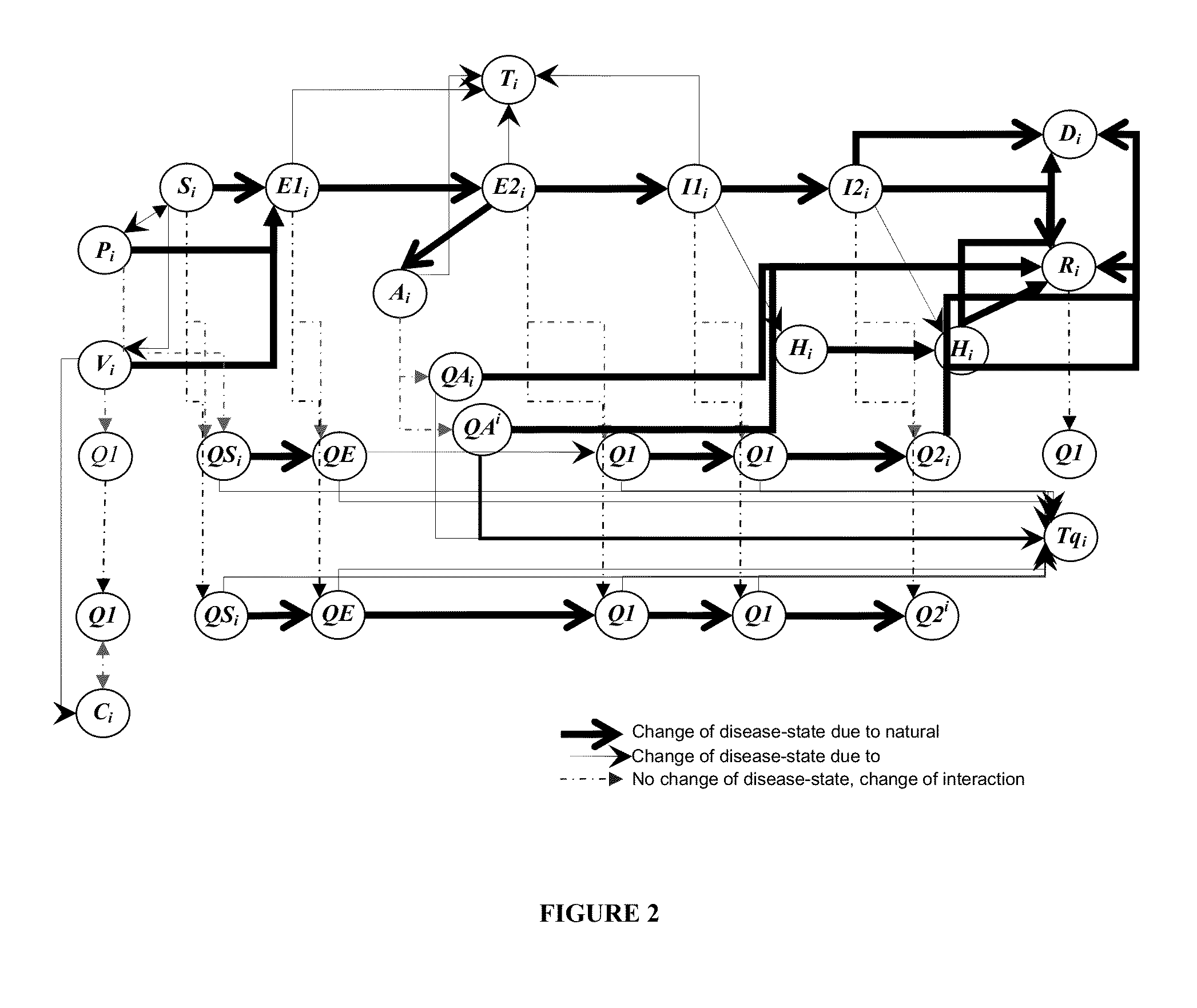Integrated health data capture and analysis system
a health data and analysis system technology, applied in the field of integrated health data capture and analysis system, can solve the problems of a large-scale epidemic of infectious diseases capable of spreading across a large region, e.g., a continent or the entire world, and can cost the region about $40 billion, so as to reduce unnecessary avoidance behavior, reduce the spread of infectious diseases, and save billions of dollars
- Summary
- Abstract
- Description
- Claims
- Application Information
AI Technical Summary
Benefits of technology
Problems solved by technology
Method used
Image
Examples
example 1
National Influenza Healthcare Monitoring System
[0454]In this example, the Health Shield system is customized for the national disease control agency and deployed as a national health shield. The primary objective of the program is to customize a system for containment and pro-active management of diseases such as influenza that can cause epidemics. The system is designed to identify, track, and contain the spread of flu outbreak and significant ‘mutant’ strains (such as those with resistance to antiviral drugs or those with more virulence) at the earliest stages of infection, thereby improving disease prevention and response. Inputs to the Operating System (OS) modeling efforts are used to determine an optimal sampling and containment strategy for influenza.
[0455]A second objective of a subject system is to improve outcomes and reduce healthcare costs by better managing and preventing the progression of chronic diseases, starting with diabetes. The ability to improve outcomes and dr...
example 2
Simulation of La Gloria Outbreak With and without Mitigation Policies
[0482]FIG. 18 illustrates the real world versus simulated results from an outbreak of influenza in La Gloria, Mexico that occurred between February and May of 2009. La Gloria is a town of about 3,000 in Mexico's Velacruz state. Hundreds of townspeople were diagnosed with respiratory problems, including positive tests for swine flu (H1N1) and the more common H2N3 flu variant. FIG. 18 shows a comparison of the actual outbreak data (circles) compared to a model without HS mitigation (solid line). The model with no mitigation agrees closely with actual data. A model with HS surveillance and mitigation policies is shown in the dashed line. The model is determined by iterative fitting of the actual outbreak to the model of FIG. 2 until an optimal fit is achieved. With the HS in place, both the severity and rapidity of the outbreak are projected to be dramatically reduced. The projected improvement is based on the model p...
example 3
Preventing and Reversing Diabetes
[0487]For diabetes and its complications (e.g., renal and cardiovascular disease), the cost-benefit relationship of the Health Shield is being quantified both through government and private programs. The programs are designed to dramatically reduce the cost of Type 2 Diabetes Mellitus (T2DM) by preventing, delaying and reversing the progression of the disease through individualized and remotely delivered life style modification therapy using the HS system.
[0488]T2DM and often-associated obesity (coined the “diobesity epidemic”) lead to frequent cardiovascular, metabolic, ocular, neurologic and renal complications as well as increased cardiovascular morbidity and mortality. T2DM results in a heavy economic burden on the health care system. In the U.S. thirteen percent of adults have diabetes, and 1.6 million new cases are diagnosed each year. The total estimated cost of diabetes in 2007 in the USA was $174 billion and 284,000 deaths in 2007 were attri...
PUM
 Login to View More
Login to View More Abstract
Description
Claims
Application Information
 Login to View More
Login to View More - R&D
- Intellectual Property
- Life Sciences
- Materials
- Tech Scout
- Unparalleled Data Quality
- Higher Quality Content
- 60% Fewer Hallucinations
Browse by: Latest US Patents, China's latest patents, Technical Efficacy Thesaurus, Application Domain, Technology Topic, Popular Technical Reports.
© 2025 PatSnap. All rights reserved.Legal|Privacy policy|Modern Slavery Act Transparency Statement|Sitemap|About US| Contact US: help@patsnap.com



